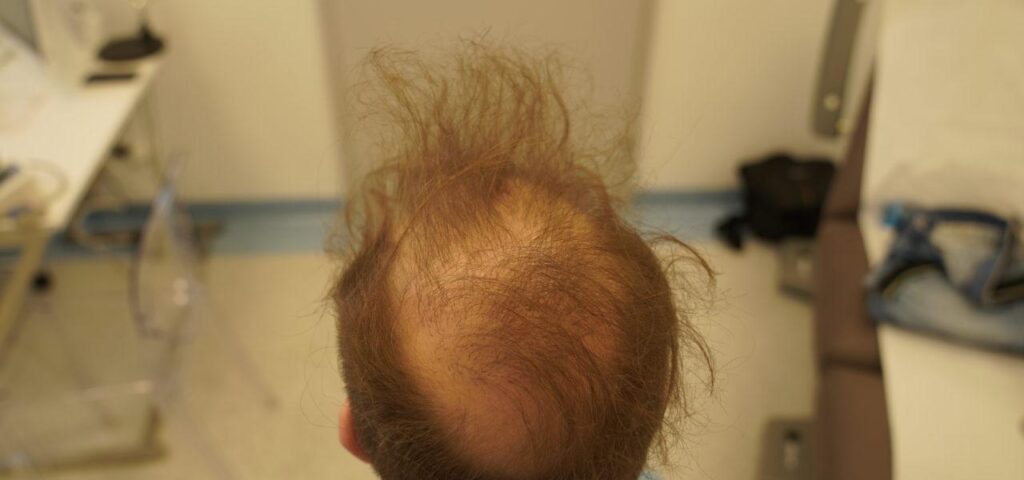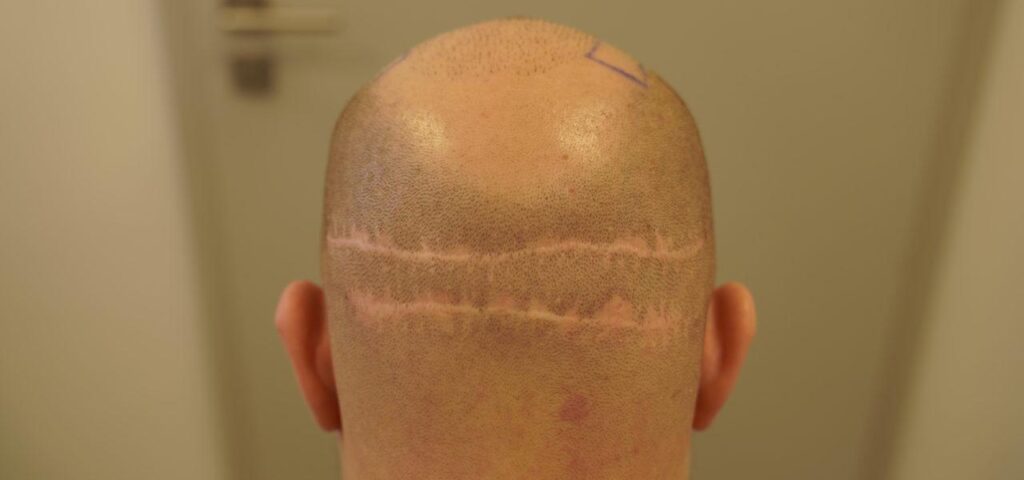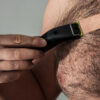Hair transplantation is the only way for those affected by baldness to quickly enjoy new hair on the scalp. Unfortunately, for many men and women, baldness becomes a reason for falling into complexes, so they opt for a hair transplant. However, the results are not always what one would expect. What is the reason for this? How can a failed hair transplant be avoided? The best way to avoid unpleasant results is to understand what may be causing them and to choose a certified trichologist.
When can we talk about a failed hair transplant?
Although technology and robotics in hair transplantation are advancing all the time, unsuccessful transplants still occur. The unnatural effect after the procedure is often due to the inexperience and lack of skill of the doctor who performs the procedure. Often the specialist also uses outdated techniques. The most common determinants of a failed hair transplant include:
- Too high, low or uneven forehead line,
- An appearance reminiscent of hair on a doll,
- Visible scarring at the graft site,
- The uptake of too many hair follicles,
- For very even distribution of hair,
- Embedding the hair too deeply in the scalp,
- Hair growth in the wrong direction.
Fortunately, the technologies used in hair restoration have advanced significantly in recent years. The attitude of doctors and patients has also changed. Nowadays you can see the perfect hair of models and models in advertisements or on billboards, which is why many people, seeing signs of aging or baldness in themselves, so easily fall into complexes. Then they naturally seek help from a trichologist in hair transplant techniques.
What affects the end result of a hair transplant?
Those who want a natural result and invisible scars after transplantation should visit advanced trichologists. Specialists use modern techniques, among which FUE reigns supreme. This method involves transplanting individual hair follicles – not a strip of skin – as in the STRIP/FUT method. Therefore, after the transplant, there is no risk of ugly linear scars forming.
The choice of an experienced doctor is also of great importance for the obtained results of hair transplantation. Before the procedure, it is a good idea to verify the technical and technological facilities of the Clinic and ask for photos of the results of other patients who have undergone such a procedure. Inadequate physician skills, poor technique and questionable equipment can have fatal results. Hair transplantation, contrary to popular belief, is a specialty in which it is not so easy to get the result you dream of. The diagnosis, planning of the procedure, the technology used, the skill of the surgeon, and precision have a big impact.
Nowadays you can see many patients who want to improve the effects of a failed previous hair transplant. An experienced trichologist will also help reduce such a problem. For this purpose, the modern FUE method is used. Specialists stress that the technique is also minimally invasive. This, in turn, makes the punctures minimal and spotty, so the scars are virtually invisible.
What does a proper hair transplant look like?
Hair transplantation with the FUE method involves transplanting individual follicle assemblies. The technique is performed manually or with an ARTAS robot. The doctor takes the hair follicle one by one (one at a time). The harvested hair is then implanted in the recipient area.
In the case of the ARTAS robot, the machine scans the scalp and automatically retrieves the follicle assemblies for transplantation. It makes incisions in the skin and creates areas where the doctor will implant previously taken grafts. Check out the difference between FUE and ARTAS hair transplantation.
FUE and DHI hair transplantation, on the other hand, is the most modern of the hybrid techniques in the world. At the same time, it allows full control over the depth, direction and angle of the growing hair. A small point needle is used during the procedure. With its help, micropunctures are performed in the form of punches. As a result, the risk associated with hair damage is reduced.
Which hair transplant technique should I choose?
The choice of hair transplantation technique depends primarily on the patient’s individual circumstances. The decision is made by the doctor during the consultation. Every patient is different, which is why it is so important to have a thorough medical consultation before the procedure, to know the patient’s expectations and capabilities.
What could be the reasons for failure in hair transplantation?
- Doctor’s lack of experience
The most common reason for the failure of a hair transplant is the lack of the necessary experience in the doctor. Techniques such as FUE or DHI require great accuracy and precision. Mastering the skills involved in hair transplantation takes a lot of time and effort. The placement of the graft is the most important step that affects the subsequent appearance of the hair after surgery. The experienced specialist knows innovative techniques that he successfully uses during the procedure.
Donor hair from the back of the head is used alone or in combination with other hair, with prior planning and transplantation. Hair follicles harvested from different donor areas using inappropriate techniques often lead to drastic results.
Excessive harvesting of grafts taken from the donor area by an inexperienced surgeon can cause significant damage to the donor area. This in turn leads to drastic effects equivalent to baldness.
- Inadequate care after surgery
Taking care of the scalp after a hair transplant is just as important as the surgery itself. During the procedure, the doctor gives the necessary instructions related to post-operative care and information on the post-operative treatment that the patient must carry out for the following days and weeks.
Some patients may struggle with extensive scabs around the hair shaft after the procedure. Scratching them or improperly washing the hair can negatively affect the transplant and the result achieved. So in the period after surgery, you should take very gentle care of your hair, avoid exposure to the sun and refrain from exercise that can cause sweating.
- Unsuitable candidate for hair transplantation
Hair transplantation, like any other procedure, has certain contraindications to its performance. Therefore, it is important to remember that not everyone is an ideal candidate. Therefore, before starting the procedure, the doctor should take a detailed history with the patient. During the examination, he will also perform various tests and procedures to assess hair loss rates.
A hair transplant performed at the wrong age is also counterproductive. Patients suffering from male pattern baldness or female pattern baldness can expect that if they have an early transplant, bald patches and thinning will continue to appear in the future due to the progressive balding process. Hair should also go through a maturity phase, because when a certain age is passed, it has a different structure. The usual limit for this age is 22.
- Fraudulent hair transplant clinics
Unfortunately, not all clinics are good and honest. A hair transplant clinic concerned only with making money pays no attention to its patient’s health. Unreliable clinics that prioritize only their own interest stand out for “numbers” rather than quality. Great importance in choosing the right place, therefore, should play the reputation and opinions of other patients.
- Misunderstanding and error
Hair transplant surgery is the first stage, followed by recovery – a long process. Some patients jump to conclusions too early and declare the procedure unsuccessful before the full process is actually complete. Thus, they do not give hair growth a chance.
Full results of a visible hair transplant can be expected over the course of a year or more. Sometimes impatient, the results of the procedure are questioned by patients. That’s why it’s so important to listen to an experienced doctor before the procedure, who will provide the patient with information about the results of the treatment to avoid misunderstandings and unnecessary stress.
- Lack of artistic talent of the doctor
An important aspect of hair restoration surgery is the importance of the surgeon’s , “artistic eye”. During the consultation, the doctor will assess the hair type and growth pattern. At the same time, he will imagine the most natural hairline. Once the location, orientation and angle of the hair growth are properly determined, they are arranged one by one with precision. The donor area in hair transplant surgery from which healthy hair follicles are obtained is the back of the patient’s head. Beard and breast hair can additionally be used as an additional donor resource. This helps give them a natural look. So it’s worth reviewing previous photos of patients and assessing the effects.
- Unrealistic expectations
The results of the treatment usually depend on the condition of the hair. The patient’s realistic expectations reduce the chance of unsatisfactory results. So it is worth talking openly about your goals and expectations. In such a situation, the surgeon can advise what result will be obtained after treatment and warn against unrealistic expectations. Patients with too few hairs in the donor area should not live in hope of getting a high density transplant.
What percentage of hair transplants are unsuccessful?
Advanced hair transplant techniques and the experience of doctors fortunately reduce the failure of the operation. The percentage is about 5 – 10%. At the hair transplant clinic of Dr. Piotr Turkowski works with a team of medical consultants and surgeons to minimize all negative factors.







